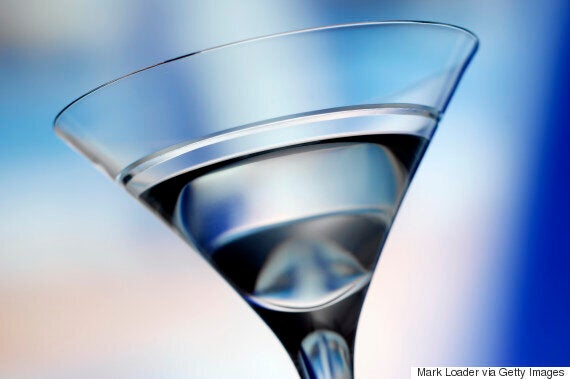"Martini. Shaken, not stirred."
It's the James Bond catchphrase that we've come to know and love, and a rule that some of us have even learnt to live by when it comes to ordering booze.
But what if we told you Bond was wrong?

Scientist and mixologist Stuart Bale teamed up with Gin Mare to explore what really makes the perfect martini.
They found that martinis should actually be stirred (not shaken), garnished with a strawberry (not an olive) and be made with gin instead of vodka. Awks.
James Bond was a master of many things and became an icon for many generations - famous for his impeccable taste - yet according to new research, his taste in martinis was flawed.
Here’s what was wrong:
Stirred vs shaken
"Shaking and stirring serve two purposes, both chill and dilute," explains Bale. "Shaking cools the drink, however it over dilutes and will leave watery. As much as 10% extra water is added by shaking instead of stirring, therefore to enjoy the flavours of a gin martini stirring is the only way.
"A perfect martini should taste like ‘exquisite water’. The most difficult aspect of mixing a martini is getting the balance between the flavours in each spirit, and actual alcohol.
"Gin is a mix of flavours, and spices, a complex blend unique to each producer. Vermouth is the same, perhaps more complex, due to its number of ingredients, wine base, and lower alcohol content."
Vodka vs gin
According to the mixologist, gin provides the foundation of a good martini as its layers of botanicals help to balance out the vermouth. In comparison vodka does not have this complexity of structure and in turn does not mix well with vermouth.
With Bond adding vodka to his martini, the flavour was being masked as the drink was also being diluted by the shaken ice.
Clean vs dirty
Don’t settle for what’s at the bottom of an olive jar to accompany a martini. Adding a marinated or stuffed olive will mask the flavour of the spirit base of the martini.
Bale explains why an olive was favoured originally. "It has long been known that salt works as a flavour enhancer," he says. "Our bodies crave salt but it also reduces the surface tension of liquids, allowing more aromatic compounds to escape and our perception of aromas to increase.
"For the ultimate martini experience add a drop or two of salt solution, therefore releasing the flavours without masking the taste."
To garnish or not to garnish?
Although using an olive is out of the question, that’s not to say there isn’t a more suitable garnish for a martini, explains Bale.
With a softer, sweeter flavour, a whole strawberry or twist of lemon or orange can particularly complement the gin base of the cocktail.
Now go forth and make many excellent martinis.
